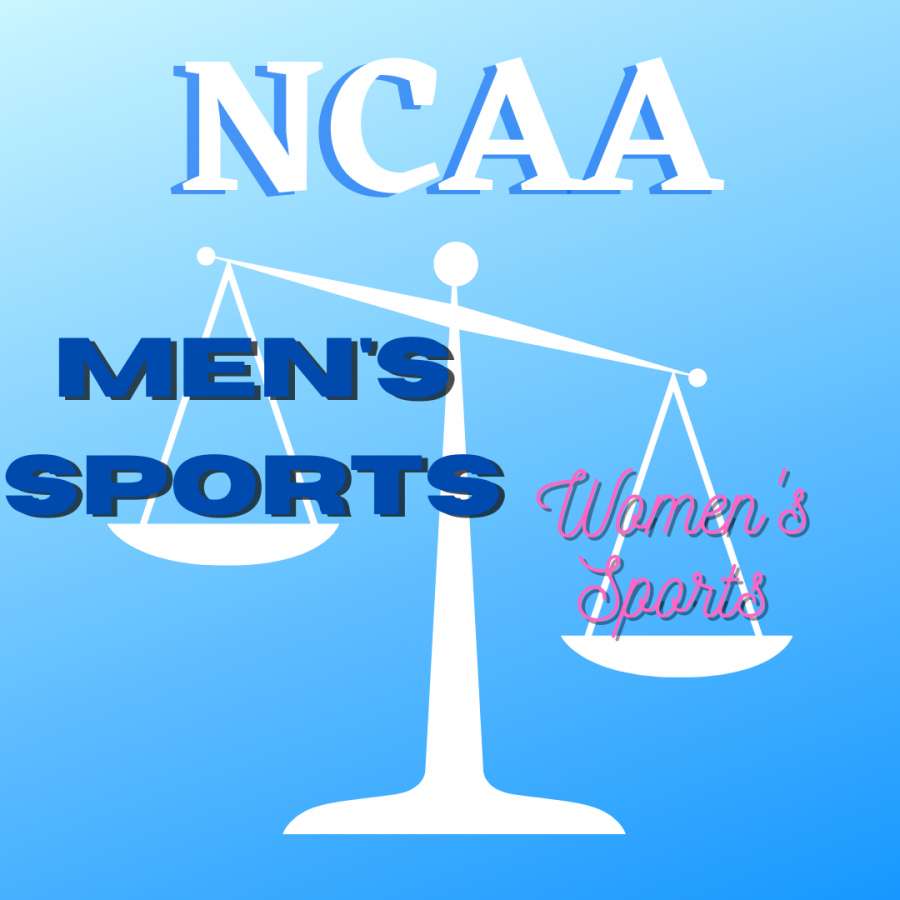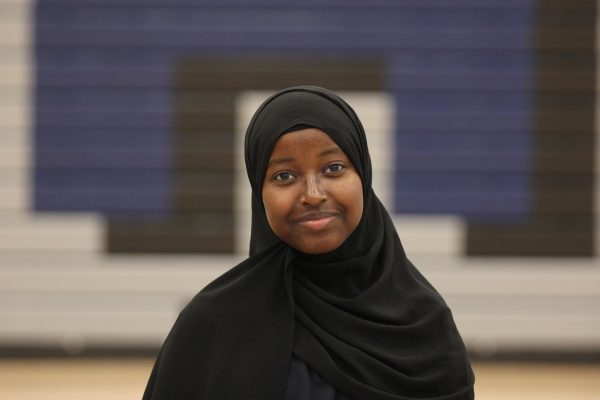NCAA needs to reevaluate their treatment of women’s sports
The graphic represents the NCAA’s unfair treatment towards women’s sports. Which was prevalent at the past March Madness Tournament.
April 13, 2021
Women’s sports have grown tremendously over the years by gaining popularity and providing more opportunities for women to play. Since 1988, over 800 Division I women’s sport teams have been added to the National Collegiate Athletic Association (NCAA). Women’s sports are also gaining more spotlight on national TV — especially in the past March Madness Tournament. The Women’s Sweet 16 saw a 66% increase in viewers compared to 2019 and the national championship game drew in an average of four million viewers, the most-watched women’s game since 2014.
Even though these numbers do not compare with the men’s, it does not give the NCAA the right to treat women’s sports any less. A social media post went viral about the men’s weight room vs. the women’s weight room in the NCAA March Madness bubble. The video showcased the men’s weight room full of squat racks, benches and other high-class workout equipment; whereas, the women’s weight room consisted of a set of dumbbells that only went up to 30 pounds. Future NCAA women’s hockey player, senior Grace Wolfe said, “I think it is very unfair that the women get underdeveloped weight rooms when they put just as much work in to get where they are compared to the men. It is also disappointing because they are just as deserving.” The video was posted by Oregon Women’s Basketball player Sedona Prince and saw retweets from NBA players like Steph Curry, Ja Morant and CJ McCollum, and from WNBA star Sabrina Ionescu.
Social media highlights inequalities
The discussion about the video also brought to light other differences in the treatment of the Men’s vs. Women’s March Madness tournament, such as: size and quality of meals, amount of free gear, amount of photographers and advertisement. The NCAA provided no photographers for the first round of the women’s tournament, in comparison, the men’s first round had many photographers — who covered every game. On top of that, the iconic March Madness logo was not used on the women’s court; the most important branding of the tournament was decided to be left off the women’s court. NCAA women athletes should have the access to the same benefits that men do, so they both have the ability to compete at their best.
When the NCAA does not reward the women’s sports teams for their hard work and success, it gives off the message that their accomplishments are lesser. This treatment by the NCAA is completely unacceptable, especially when they have a rule about gender equity.
The NCAA’s Title IX rule states, “No person in the United States shall, on the basis of sex, be excluded from participation in, be denied the benefits of, or be subject to discrimination under any educational program or activity receiving federal financial assistance.” Title IX of the Federal Education Amendments was signed into law on June 23, 1973.
Some people might argue that these differences come down to the difference in revenue, but the NCAA is a non-profit organization, so they should not be favoring certain teams over others. Instead, the NCAA should be working to close the gap in the budget between men’s and women’s sports. Junior Eli Knutson said, “If the NCAA starts to advertise and show women’s sports on TV, that will help even out the revenue created by men’s and women’s sports.” It is no secret that men’s sports draw in more money than women’s, but the problem is that the women have not been given a fair shot to draw in the same crowds. This year’s March Madness was the first time every women’s game was fully covered on TV. After a sell out crowd and 3.6 million viewers for the 2019 Women’s National Championship, ESPN was driven to fully cover every Women’s March Madness game. Which is a great stride for women’s sports, but it is crazy that it took this long for that to happen when the men’s tournament has been fully covered since 1982.
With women’s viewership continuing to increase, the NCAA needs to reevaluate how they are treating women’s sports. The coverage for women’s sports needs to keep increasing and advertising needs to be more prevalent because this will close the revenue gap between men’s and women’s sports. If women’s sports are treated equally, the viewership will follow. There has not been a limit put on women’s sports and they deserve to have a fair and equal opportunity to show what they can do.








